Chatting with an AI about ideas lets you explore angles, approaches, and—most importantly—weirdness that you might never have thought of on your own.
What is really exciting about this week’s advances in AI is that I think that generative AI is good enough, right now, to make you much more creative.
Despite of (or in fact, because of) all its constraints and weirdness, it is perfect for idea generation. There are a few reasons why I think this is true. First, idea generation benefits from differences: Diversity of backgrounds of people in the room, differences in core beliefs, and variations in social networks all help add new ideas and combinations to the mix. AI is not a substitute for this, but it is a way of adding extreme difference and even weirdness to your idea-generation sessions that can be useful to build on.
And that weirdness is a benefit in idea generation as well, in a way that it is not in other applications. Chat-based creative AI can be untrustworthy, presenting fake results as real with confidence, or even “hallucinating” a fake answer. This can be a problem if you are a doctor hoping to get trustworthy diagnostic information, but it isn’t if you are trying to generate ideas, where strangeness can be a benefit and bad ideas are filtered out. AI also adds a vast amount of (mostly accurate) knowledge, which can help generate unique combinations and recombinations of existing ideas.
Finally, chat-based creative AI is available right now. You don’t need to be a programmer or to spend any money. Just sign up at Open AI playground or, even better, ChatGPT, and start working. How can it help you generate ideas? We can turn to the science of idea generation to get some hints.
Play with constraints.
A way to generate good ideas is to change the boundaries of the problem by altering the constraints you face. This allows you to see a problem in a new way, which might lead to new solutions. Adding constraints can have the same effects.
Psychological experiments have shown that when people have limitations on the ideas they can pursue they are often, paradoxically, more creative. For example, in one study, participants were told to design a toy for children, given five weirdly shaped blocks selected from a larger set of pieces.
In some cases, the experimenters randomly gave people blocks, while in others they allowed participants to pick their own. Additionally, in some cases the subjects had to use all five blocks, or they were allowed to use any number of the blocks they were given. The least-constrained scenario allowed for someone to pick their own blocks and use whatever number they saw fit. Surprisingly, people in this group came up with the least-creative answers. Instead, the most constrained group of participants—those who were given five blocks randomly and had to use all five—were actually the most creative, both in process and outcomes.
Constraints help because they force you to change your thinking and break out of old frames. You can add constraints to your ideas in various ways, often by consciously changing your perspective. For example:
You can consider extreme users of a product or service, which can force you to think of novel angles: How would an astronaut use a common product? What about a child? Someone on the run from a secret conspiracy?
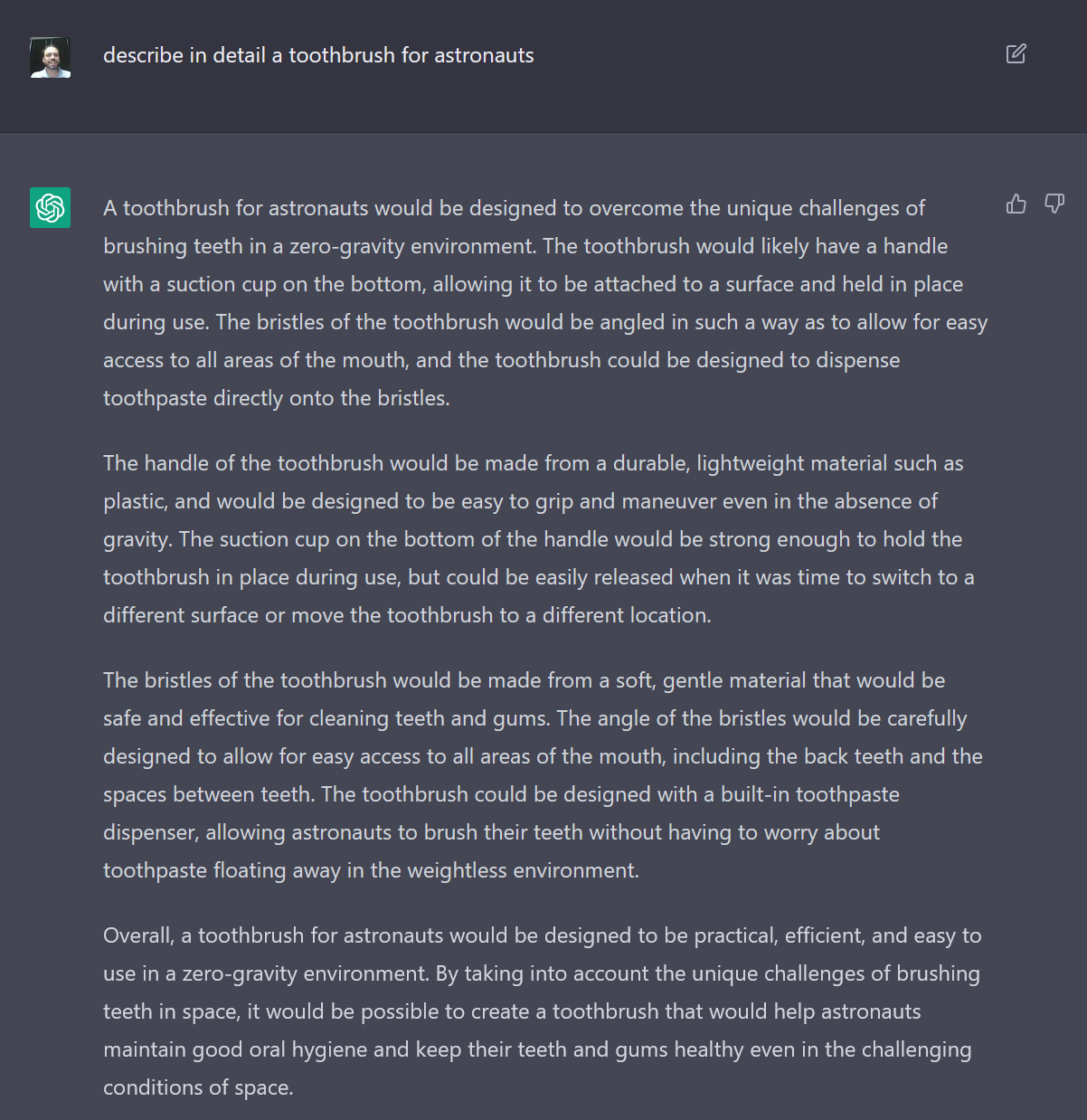
You can place constraints on your solution to spark new approaches: What if it had to be done using an online service? How could the problem be solved by modifying an animal or plant? What if it had to be done for less than $10?
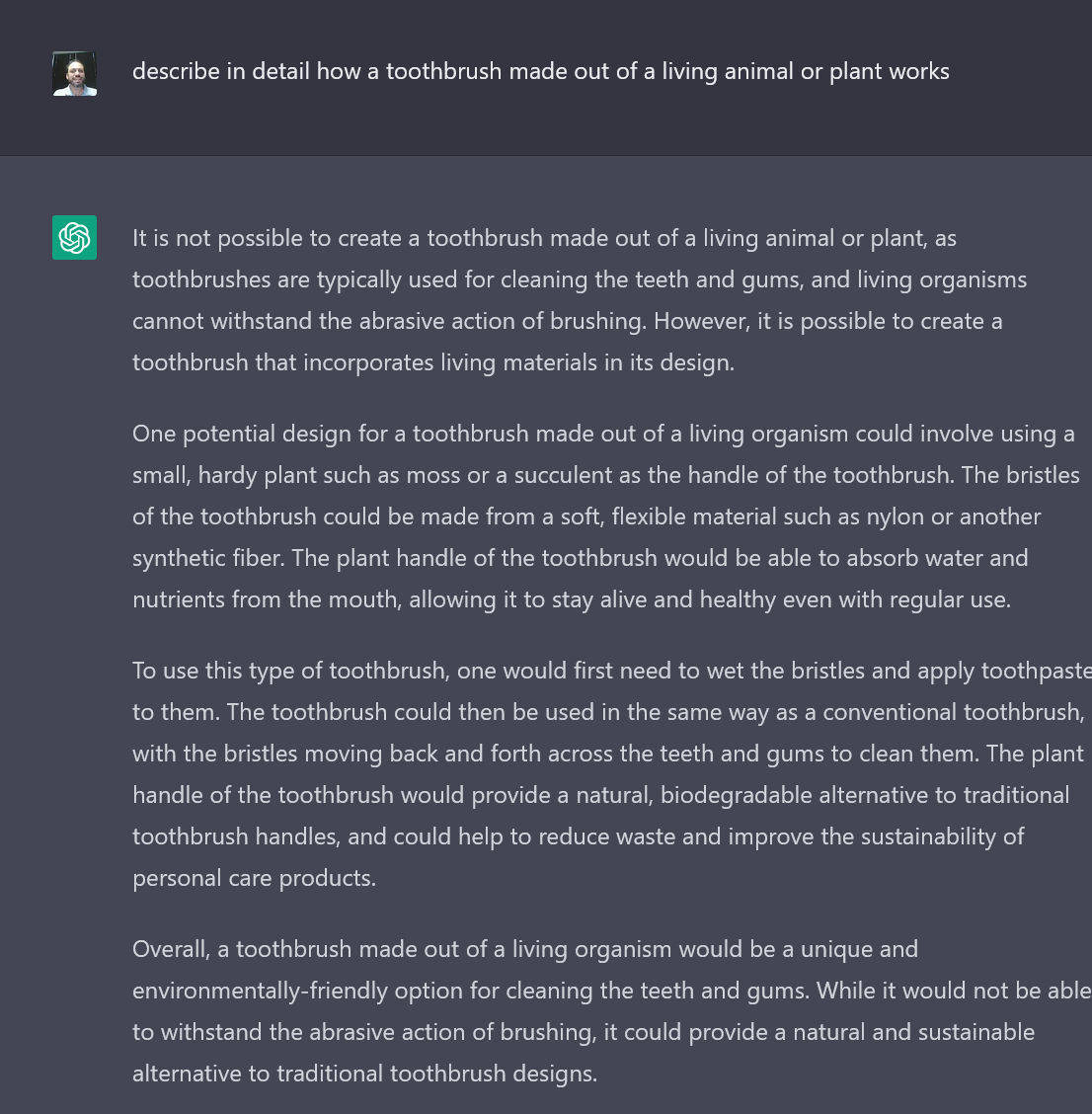
You can consider opposites, which force you to think about the space more generally: What would you do if you were trying to make the problem worse? What is the most complex way you could solve this particular issue?
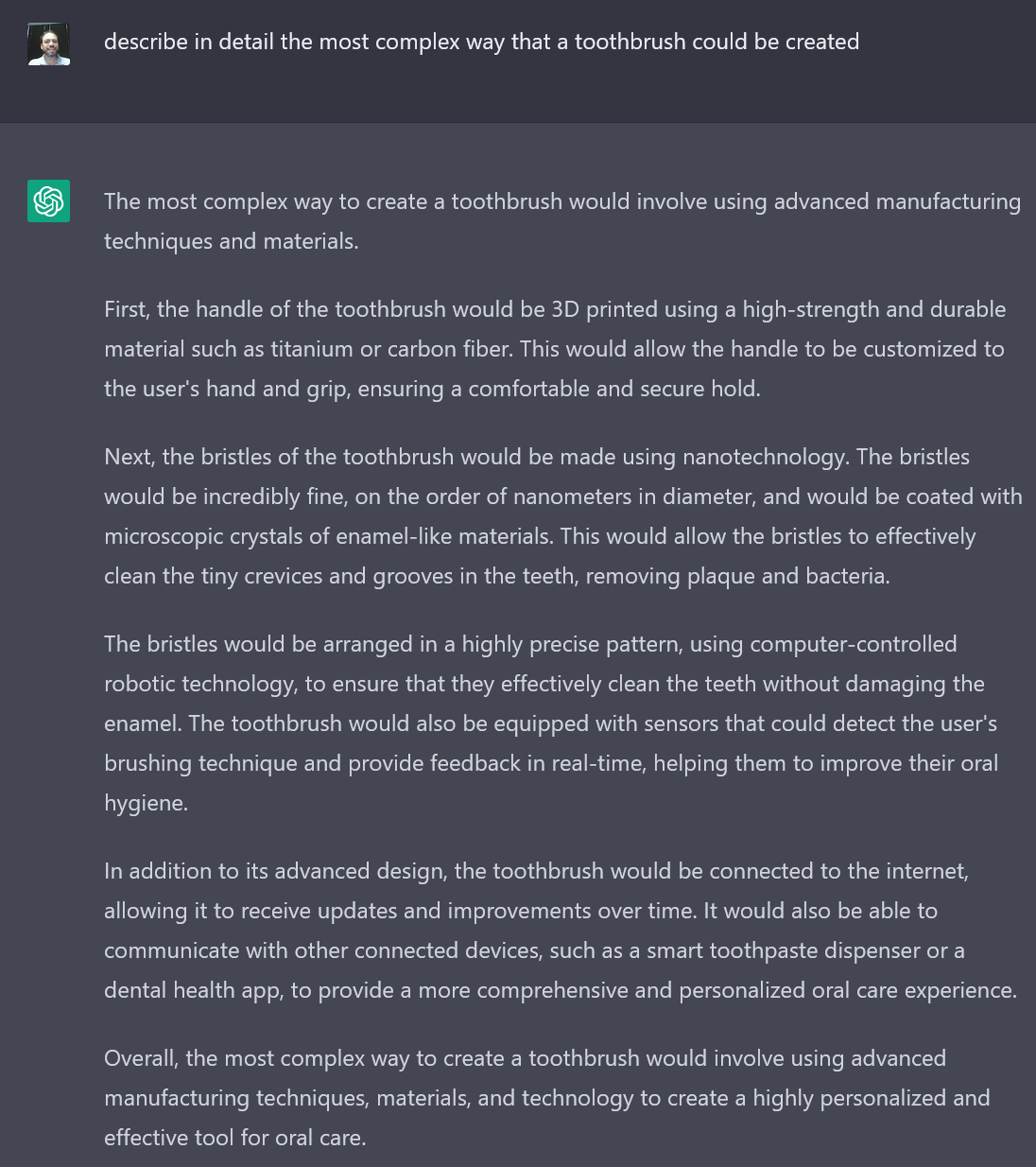
AI is awesome at all of these things. The answers are not going to be perfect or accurate, but you don’t need them to be! They are ways of pushing you out of your own familiar patterns.
“Interview” the AI.
One of the most important things you can do to change your perspective is to actually observe the world and see if you can learn anything new or surprising. This involves moving past searching the internet or reading books, and instead watching people go about an activity that you are interested in exploring.
While nothing beats a real human, an AI interview can be a surprisingly enlightening first step. You just need to make it “act” the part. This can involve asking it to “imagine you are a ____, how would you answer” or to ask it to “describe how ___” might answer a question. It may involve a bit of experimentation, but the results can be interesting.
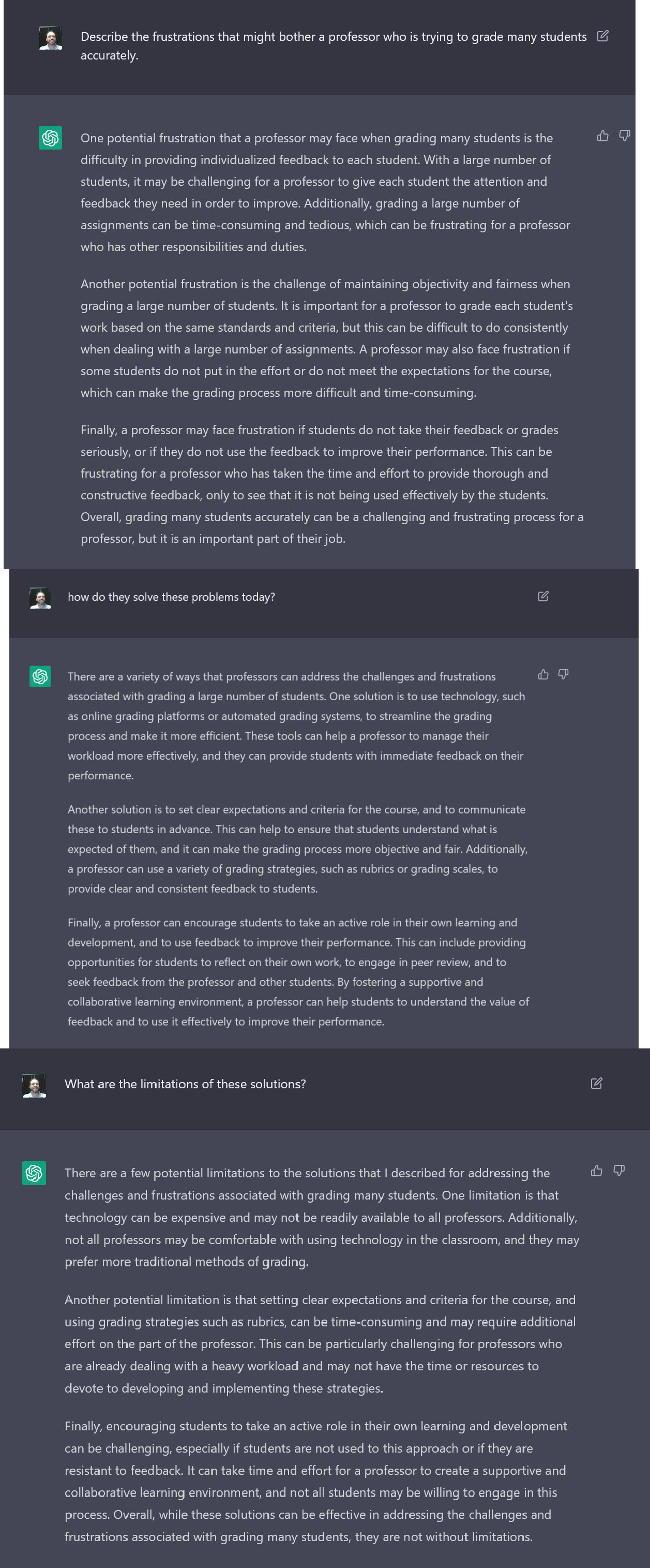
Again, this is no substitute for actual interviews, but it is often a useful way to get you to think about problem areas you haven’t considered, and to prepare yourself to get better data from the real world.
Yes, and . . .
The classic improv technique for playing with ideas works with AI as well. Agree with its points while adding something new in order to focus in on areas you want to think about more. For example:
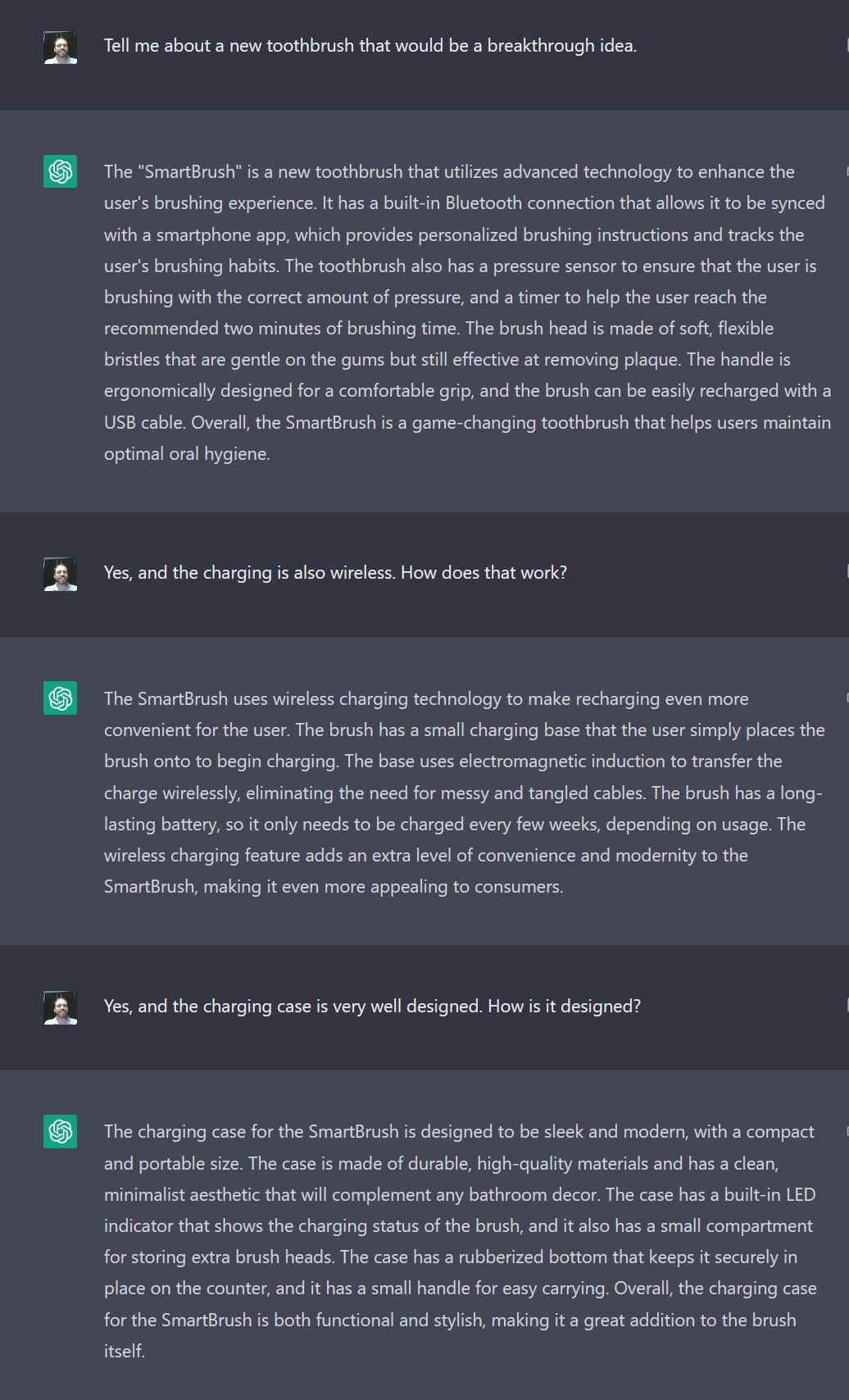
Go for volume.
There is a lot of research showing you need to generate a lot of ideas to find good ideas. AI is very good at volume (don’t worry, I won’t show the whole list). Will all these ideas be good or even sane? Of course not. But they can spark further thinking on your part.
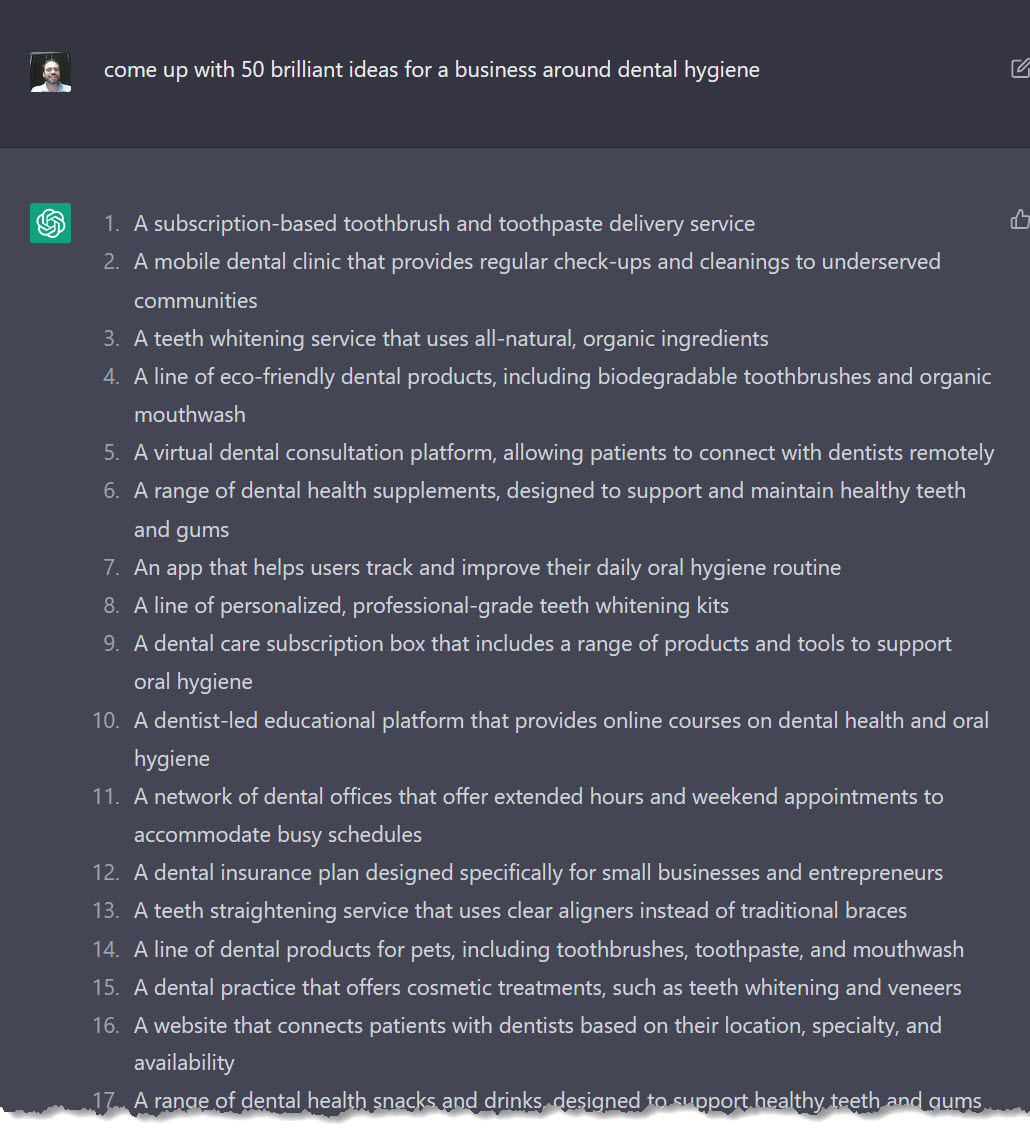
Make it weird.
Since creativity can be sparked by all sorts of interactions, you can easily try different approaches. Ask the AI to present you a solution in the form of a Johnny Cash song, a script from Seinfeld, described by an alien, written by the smartest woman in the world, or any other variation you can think of.
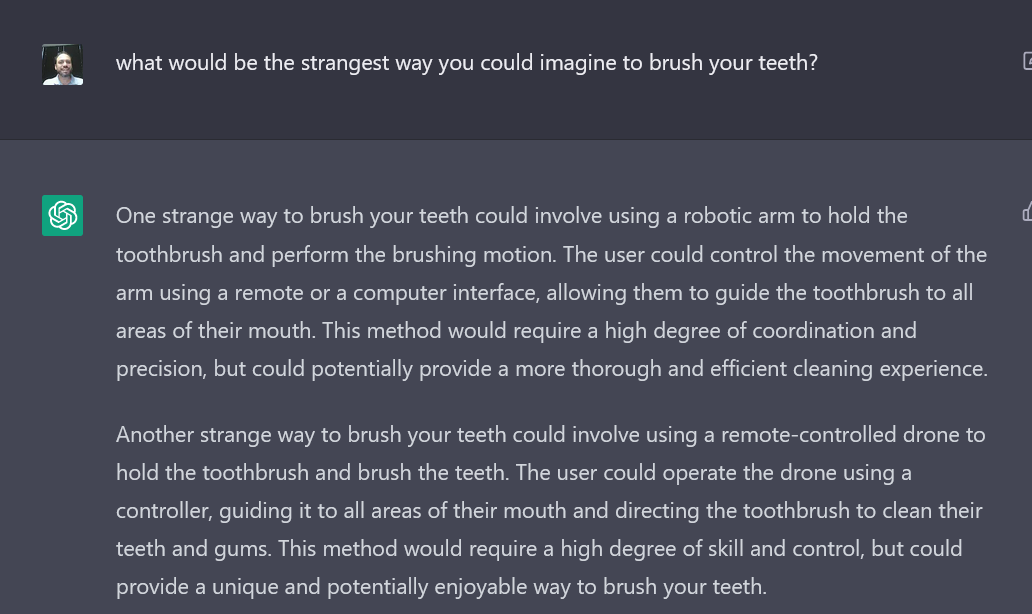
We have a new source of oddness in the world, and that is a powerful seed for creativity
ENDS
—
This article first appeared https://www.fastcompany.com
Seeking to build and grow your brand using the force of consumer insight, strategic foresight, creative disruption and technology prowess? Talk to us at +971 50 6254340 or engage@groupisd.com or visit www.groupisd.com/story

